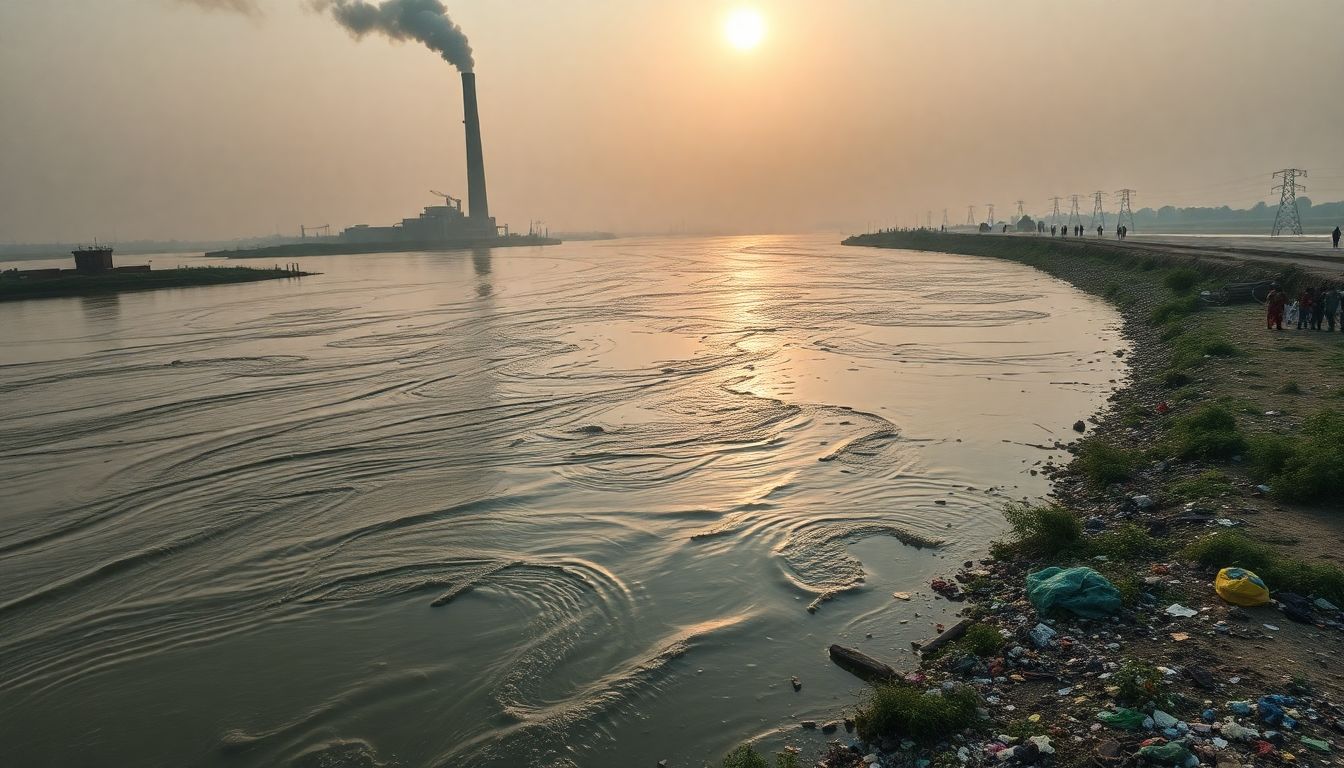
The Yamuna River is essential for millions of lives in India, providing water for drinking, irrigation, and spiritual practices. However, pollution has reached critical levels, threatening both the ecosystem and community health. This guide highlights the sources of pollution, ongoing efforts to clean the river, and steps everyone can take to make a difference.
Understanding Yamuna River Pollution: Sources and Impacts
Industrial Waste and Sewage Discharge: The Major Contributors
Pollution from industries is a significant challenge for the Yamuna. Here are some alarming stats:
- Over 58% of the river’s pollution comes from industrial discharge.
- Major polluters include textile, pharmaceutical, and chemical industries.
- Approximately 3,500 million liters of untreated sewage enter the river each day.
These numbers illustrate a dire situation that demands urgent attention.
Agricultural Runoff and its Devastating Effects
Agriculture contributes heavily to the pollution of the Yamuna.
- Farmers in the basin use around 16 million tons of fertilizers annually.
- Pesticides from farms seep into the river, harming aquatic life.
- Soil erosion worsens the problem, leading to sediment buildup and habitat loss.
These issues compromise water quality and endanger the diverse wildlife relying on the river’s ecosystem.
Religious Practices and Their Environmental Footprint
Around the Yamuna, religious customs often contribute to pollution.
- Offerings like flowers and food are common but can increase toxic waste.
- Initiatives, such as installing collection bins during festivals, aim to minimize these impacts.
- Sustainable alternatives, like biodegradable offerings, are being promoted.
Addressing these practices is essential for cleaner waters.
Current Initiatives and Government Policies
National Clean Ganga Mission (Namami Gange) and its Yamuna Focus
The Namami Gange project focuses on rejuvenating the Ganga and its tributaries, including the Yamuna.
- It includes initiatives for sewage treatment and riverbank beautification.
- The project has allocated ₹20,000 crores for cleaning efforts.
- Current plans target major pollution hotspots across the river.
While progress is being made, continuous evaluation is necessary to determine effectiveness.
Role of NGOs and Community-Based Organizations
Various NGOs play a crucial role in cleaning the Yamuna.
- Organizations like “Yamuna Jiye Abhiyaan” mobilize communities for clean-up drives.
- Case studies show that local efforts, such as tree planting along riverbanks, improve the ecosystem.
- Challenges remain, like lack of funding and community engagement.
Working together can amplify their impact.
Actionable Steps for Individuals and Communities
Reduce, Reuse, Recycle: A Personal Approach to River Conservation
Everyone can contribute to cleaning the Yamuna:
- Minimize plastic use and opt for reusable bags.
- Practice proper waste disposal by not littering near the river.
- Participate in community composting programs to reduce organic waste.
Small changes lead to significant results.
Supporting Sustainable Businesses and Practices
Choosing eco-friendly options can help the Yamuna’s health:
- Advocate for industries adopting cleaner production methods.
- Buy from local businesses that prioritize sustainability.
- Encourage farmers to use organic methods and reduce chemical inputs.
Choosing wisely makes a difference.
Raising Awareness and Promoting Civic Engagement
Educating communities about river health is vital:
- Organize workshops to discuss the importance of clean water.
- Arrange community clean-up events for local riverbanks.
- Involve citizens in monitoring water quality through participatory science.
Empowered communities drive change.
Technological Innovations and Future Solutions
Advanced Wastewater Treatment Technologies
New technologies can transform how we tackle pollution:
- Advanced filtration systems efficiently treat sewage before entering rivers.
- Plants in other regions have successfully reduced waste discharge by over 90%.
- Assessing these methods for the Yamuna could yield similar results.
Implementing these solutions is crucial.
Bioremediation and Ecological Restoration Techniques
Natural approaches to cleaning can restore the Yamuna:
- Bioremediation uses plants and microbes to clean polluted waters effectively.
- Projects in similar ecosystems have shown successful recovery of habitats.
- This method could revitalize the Yamuna’s ecosystem over time.
Embracing nature’s solutions helps restore balance.
Conclusion: A Collaborative Effort for River Revitalization
Cleaning the Yamuna River is a shared responsibility. It requires a blend of government action, community engagement, technological advancements, and individual commitment. Everyone plays a role in this revitalization effort. Together, we can protect the Yamuna for future generations and ensure its health as a precious resource.




Pingback: पीएम किसान सम्मान निधि की 19वीं किस्त: कब मिलेगा पैसा? – Dustak24